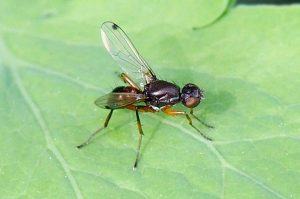Lovely sunny day (27.03.17) so made a brief visit to the Lucy Brook area in Upper Sowerholme. Things are starting to hot up in terms of insect activity – very exciting to think about all the interesting small animals to be seen as this new year progresses! As the flowers develop we will see dozens of attractive hoverfly species and many more insects drawn to the nectar and pollen on offer – but there are other things on offer.
The Common Yellow Dung Fly, Scathophaga stercoraria, is everywhere and will be all year, It is one of the most abundant and ubiquitous of British flies and is named after the furry, golden-yellow males (the females are greenish and not furry). The cows on Fairfield provide suitable resources for a range of species and no-one who has walked past fresh cow pats will have failed to notice the large (up to 1 cm) yellow flies that are disturbed by your approach… one of the many animals performing a vital function, helping us avoid being knee-deep in waste matter!
Fly of the Day – Sepsis punctum
Many of these wing-wavers around at the moment. One of 29 species in the Sepsidae family, most of which are also coprophagous animals. Fairfield has at least 4 species that look the same without microscopic identification and that all use dung (at different stages in its freshness) in their life cycle. They are often quite visible and unmistakeable in their behaviour. About 3-5 mm in size, looking ant-like with constricted waists and glossy, mostly black bodies, their wings have a black spot at the end and they walk about on vegetation waving their wings up and down in a very distinctive and noticeable manner. No-one has yet given a definitive explanation for why they do this!


